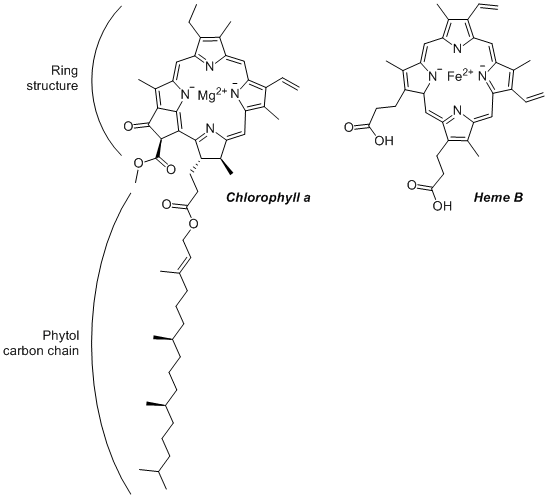I arrived in Tromsø on the 12th
of September from London. The weather in the UK had been beautiful – sunny days
with temperatures around 25-30C. In stark contrast, Tromsø was very wet,
overcast and 10C. To add to that, Tromsø is a very small city with a population
of only around 70 000 people. I really was in a state of culture shock and
wondering why on earth I had ever wanted to come here.
The reason I had come to Tromsø was Prof
Abhik Ghosh, a chemist who has spent most of his academic career working on a
unique family of compounds called “corroles.” Corroles are related haems from
haemoglobin. While corroles and haem they have a similar structure, their
chemistry is remarkable different. In particular corroles are able to stabilise
highly reactive forms of metal ions.
Prof Ghosh’s research group primarily
spends their time synthesising different types of metal-corroles and studying
the differences between. One of his main interests in how diatomic gases such
as oxygen (O2), carbon monoxide (CO) and nitric oxide (NO) bind to
these stabilised, reactive metal centres.
 The first day was spent rummaging through
all their draws and pulling out all their stocks from years of synthesis. It
was great fun finding unusual compounds containing metals such as gold, rhenium
and osmium. Our next task was to decide which of the compounds to test. We had
to consider two different aspects – whether the compound would be likely to
bind to our silk films and whether the compound will be good as at reacting
with nitric oxide in a sensor. While it is nice to try and come up with
theoretical arguments for which would be the best, things often do not work the
way you expect them to and often the “suck and see” approach works best. We ended up with 18 different compounds that
we tested and left the silk films soaking in them overnight.
The first day was spent rummaging through
all their draws and pulling out all their stocks from years of synthesis. It
was great fun finding unusual compounds containing metals such as gold, rhenium
and osmium. Our next task was to decide which of the compounds to test. We had
to consider two different aspects – whether the compound would be likely to
bind to our silk films and whether the compound will be good as at reacting
with nitric oxide in a sensor. While it is nice to try and come up with
theoretical arguments for which would be the best, things often do not work the
way you expect them to and often the “suck and see” approach works best. We ended up with 18 different compounds that
we tested and left the silk films soaking in them overnight.
The next morning I eagerly raced to the lab
to see how my silk films were doing. To my delight, some of them had “stained”
beautifully. Some of them were a real mess – but that is too be expected when
you are trying to do weird things like put compounds that you normally work
with in organic solvents like chloroform into proteins!
Our success at getting some corroles to
bind to silk proteins meant that we could move to the next stage and begin
testing them for the suitability as a nitric oxide sensor. While there was some
preliminary testing that I could do in Tromsø, the real testing will need to be
done back in Canberra.
At the end of my week in Tromsø I was
delighted to have 4 compounds to take back with me to Australia to test in our
setup. Who knows – one of these could the answer to making a life changing
device for asthmatics.
An added bonus was that as the week wore on, the weather significantly improved showing the amazing beauty of this area. I'm very glad I made it all the way to the world's most northern university.
 |
| Tromso |
 |
| The University of Tromso |













